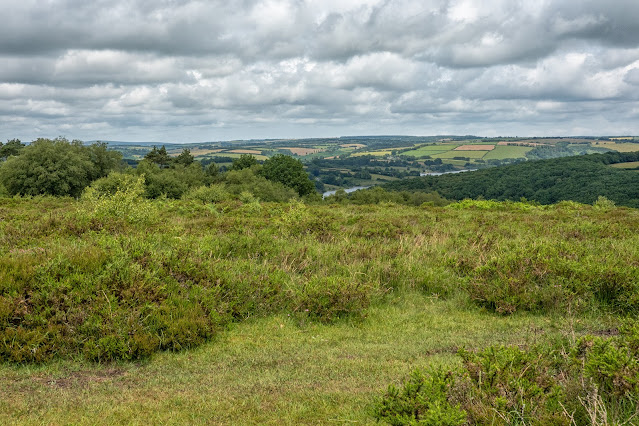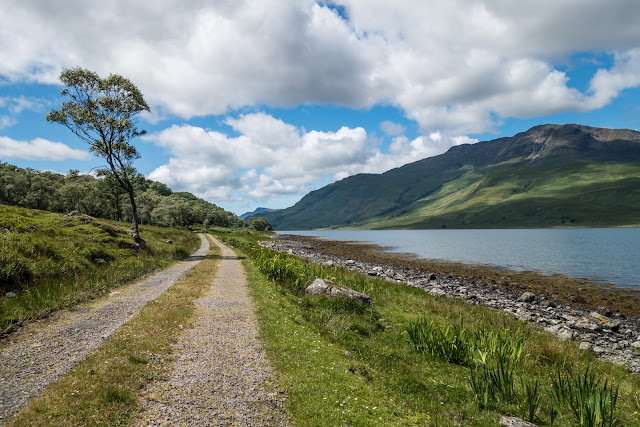Exmoor - Watchet and Clifton Suspension bridge
Our last day and the start of our drive home, I have included together. We decided to visit Haddon Hill on our last day on Exmoor.
As one of the higher points in the southwest of Exmoor National Park, overlooking Wimbleball Reservoir. Haddon Hill provides an accessible way to experience Exmoor's wide-open moorlands. It is a wonderful place to see the herd of free roaming Exmoor Ponies that live here. The heather and gorse provide a habitat for many species of insect and during the summer, including the rare heath fritillary. With the possibility of seeing this particular butterfly, this was our first stop. We set out on the most obvious trail, and yes, there were the ponies - which kindly moved out of the way!
Apart from that, the walk was somewhat of a disappointment, for the heather and gorse - not a flower in sight and obviously not a butterfly either. A pleasant walk looking across the moorland down toward the reservoir but otherwise not what we had hoped for.
As there was no point in lingering here, we set off to Watchet - a small coastal town with an active marina and some quaint houses - apparently.
So, here is the marina - and the tide is out!
The entrance to the harbour with the lighthouse and then to a walk along the promonade.
Samual Taylor Coleridge
On the promenade were two interesting statues, the one above is probably better known because the Ancient Mariner must be part of most children's schooling. As mentioned earlier, we visited Nether Stowey at the start of this holiday.
The statue below is of a man who is new to me, but obviously this area was his home.
John Short, also known as Yankee Jack, was a sailor from Watchet. He was a prolific singer and between April and June 1914 Cecil Sharp collected 57 sea shanties from him, making him one of the largest donors of song material in Sharp’s Quantock journeys. Sharp published a book English Folk-Chanteys, containing 60 songs, 46 of which were collected from John, making him incredibly important to English sea shanty history.
[Cecil James Sharp (22 November 1859 – 23 June 1924) was an English collector of folk songs, folk dances and instrumental music, as well as a lecturer, teacher, composer and musician. He was a key figure in the folk-song revival in England during the Edwardian period.]
Born in 1839, John was employed on a number of ships in his career, sailing as far away as the Far East, Peru, India, and North America. He was often employed as what was known as a “Shantyman” on ship, to keep the crew working in rhythm. Therefore, we know his songs are ones authentically used on ships.
As well as a prolific singer, John was at the heart of the Watchet community, later becoming Town Crier. A statue by Alan Herriott was erected in his honour on the seafront in 2008. He died in 1933, so by the time he met Cecil Sharp he was 76 and retired from his life at sea. This also means that the songs he shared were those known to be sung in the mid 19th century and probably went back much further. He was a true local man who in his long life saw the world, but it is the heritage of the ocean brought back to the Severn Sea, that gives him his place in national folk as well as Quantock history.
I saw this on the front door of a house, so I had to get the photo!
That was it for this holiday in Somerset, and very enjoyable it was too. Next morning, we set off with the aim of stopping to see the Clifton Suspension Bridge in Bristol. The following few images are taken of the bridge.
The bridge is built to a design by William Henry Barlow and John Hawkshaw, based on an earlier design by Isambard Kingdom Brunel. It is a Grade I listed building and forms part of the B3129 road.
The idea of building a bridge across the Avon Gorge originated in 1753. Original plans were for a stone bridge and later iterations were for a wrought iron structure. In 1831, an attempt to build Brunel's design was halted by the Bristol riots, and the revised version of his designs was built after his death and completed in 1864.

I thought the river looked a bit murky!
Really interesting to see and to marvel at the brilliance of those who design such structures. The bridge is a Grade I listed building and forms part of the B3129 road.





%20Watchet.JPG)







Comments